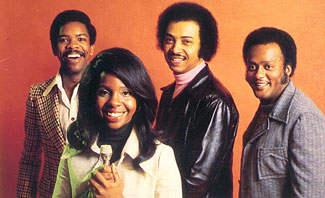Based on the job numbers we’ve seen over the past nine months, I would agree with recent projections coming from our California-based economists that unemployment in California will continue to be above 10.5% throughout 2011 (higher throughout most of the year). However, there are four employment dynamics that may impact the pace of recovery, and that we need to keep an eye on.
The UCLA Anderson School in December projected that unemployment will go down slowly in 2011 from the current 12.4% only to 10.9% by the end of 2011. Anderson economists also projected that the state would gain a net of 183,000 jobs. Chapman University economists in December projected that the state would gain a net 167,000 jobs and that the California unemployment rate would remain above 10%.
These projections are consistent with the no-significant-hiring trend we’ve seen in California in 2010. The most recent monthly state job numbers, released on December 17,2010, showed a very modest net 1600 jobs, with a number of the major job sectors (trade, transportation and utilities; financial services; manufacturing) registering net job losses.

(Gladys and the Pips—We’ll come to them later in this posting)
Here are the 4 employment dynamics to keep an eye on.
1.Will the recent Federal Tax deal and/or South Korea trade deal spur private sector confidence? By far the main factor in our California jobs recovery is private sector hiring, and in turn private sector confidence. The story of the past two years is a private sector in California that has little confidence that the economy will be improving to justify hiring.
In December, two major economic events occurred on the federal level that might positively influence confidence. One was the tax deal (avoiding tax hikes) that the White House and Congress achieved; the other, the South Korea trade deal (encouraging trade).
2. Will California’s business formation rate remain strong, and even grow? California’s main economic strength is its entrepreneurial ethos, the willingness of its residents to get out and start businesses, either small businesses aimed to employ others or self-employment personal businesses.
Through 2009, the Secretary of State’s office which tracks business incorporations found that while business incorporations were down in the first two years of the recession, they were still near a strong 100,000 new business incorporations in year 2009. The data on California business incorporations for 2010 has yet to be released. Early information on small business start-ups nationwide indicates that they were down in 2010 due to tight lending and other factors. Whether California employment picks up will depend a lot on the pace of both small business and personal business activity.
3. Will job growth in alternate energy be a significant factor? The short term impacts of the greenhouse gas emissions bills, AB32 and SB375, have been mixed in terms of short-term job creation and destruction, destroying some jobs and creating jobs. There is no question, though, that the emphasis on alternate energy, combined with the interest of California venture capital firms, is leading California to be a leader in business growth related to alternate energy. The unknown is how long it will be before the business growth translates into significant job growth.
4. Are California employers moving away from the employer-employee relation toward contingent employment or minimizing labor altogether? Perhaps the least-noted potential dynamic for 2011 and beyond is the potential that employers are moving away from the traditional employer-employee model to contingent employment or even to minimizing the number of workers altogether. The employer-employee relation has been breaking down in California for the past two decades. The trauma of downsizing during the Great Recession may lead employers to further depart from this structure.
***
As this is being written, we are heading toward the midnight of 2010, and the beginning of 2011.
So it is difficult to think of a better way to usher in the first week of 2011 than to include this 1973 version of Gladys Knight and the Pips performing “Midnight Train to Georgia”. Talk about survivors: Gladys and the Pips have continued to perform, and their more recent renditions of “Midnight Train” are as rich as ever.
The song, by the way, has an interesting back story. It was originally written and recorded by songwriter John Weatherly as “The Midnight Plane to Houston”, and attracted little popular or critical attention. It was Gladys, her producers, and the Pips that made it the work of art it became.

